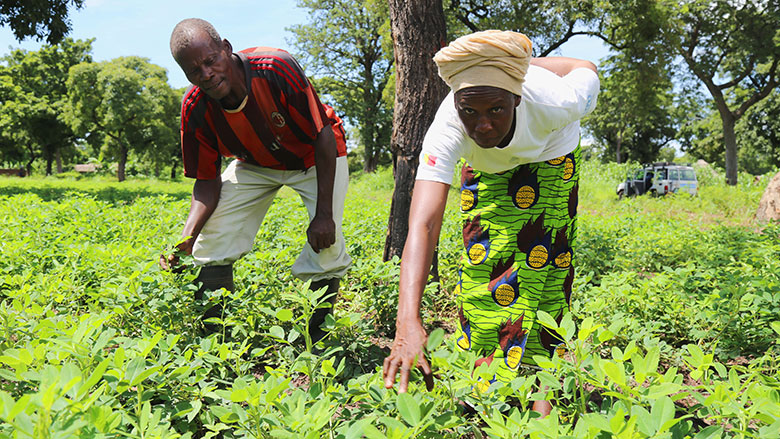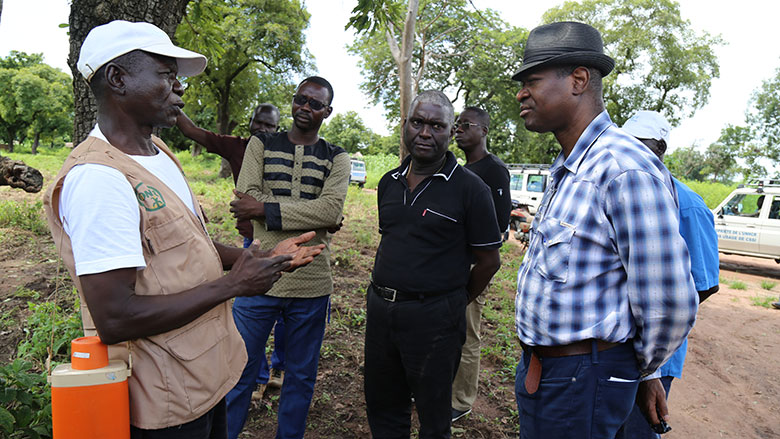N'DJAMENA, October 31, 2016 – In Gondjé, a large refugee camp lost in the forest not far from Goré, Daniel Debah has made a name for himself as the president of Seed Producers, an association certified by the National Office for Rural Development (Office national de développement rural or ONDR). Surrounded by his fields of groundnuts and sorghum that stretch as far as the eye can see, he could hardly conceal his satisfaction. “I produced all these crops using the seeds that the project distributed to us. I started out with only a few plots of land, and now, look at all this land,” he gushes. “I can now sell my seeds and feed my family, all thanks to my crops.”
Chad has the highest ratio of refugees to population of African countries. In 2013, Goré and its environs, located 600 kilometers to the south of the Chadian capital, N'Djamena, confronted an unprecedented inrush of refugees and returnees fleeing the outbreaks of violence that rocked the Central African Republic. Three years after their settlement, projects such as the World Bank-financed Emergency Food and Livestock Crisis Response Project are helping nearly 70,000 people begin the process of rebuilding their lives. By giving them the means to return to their agricultural and livestock activities, the project has allowed them to meet their nutritional needs and take back up their livelihoods.
Debah is one of countless refugees who sell their crops at the large market outside the Amboko refugee camp. Also among them is Saint-Cyr Redeybona, who shared his experience: “A year ago, I obtained one bag of unshelled groundnut seeds. From this, I harvested four bags of shelled seeds that I sell for 10,000 francs CFA each.” This income of roughly 40,000 francs CFA will go toward taking care of “household needs and clothing for my family.”
Others like Maxime Nodjindo are investing in cassava crops. Nodjindo now supplies cassava cuttings to Gondjé’s demonstration plot (used for teaching farming techniques), set up by ONDR with money from the project. This activity guarantees him “a steady income,” he explained.


